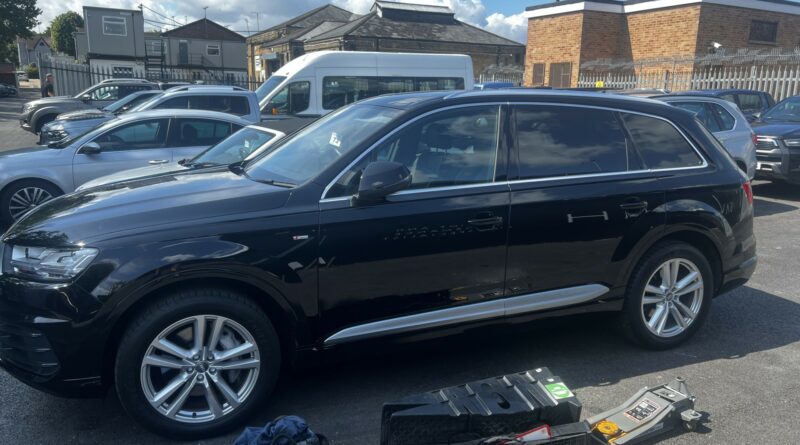Used Audi Vehicle Inspection: Ensuring a Premium Driving Experience
When considering the purchase of a used Audi, conducting a thorough inspection is paramount to ensure that you’re investing in a premium vehicle that delivers both style and performance. Audi cars are renowned for their luxurious interiors, cutting-edge technology, and powerful engines. By following a comprehensive inspection process, you can assess the condition of the vehicle and make an informed decision. Here are some key aspects to consider during a used Audi vehicle inspection. Start with mot.
Exterior Inspection: Begin by examining the exterior of the Audi for any signs of damage, such as scratches, dents, or paint inconsistencies. Check for uniform gaps between body panels, as any misalignment may indicate previous repairs. Inspect the headlights, taillights, and other exterior lighting to ensure they are functioning correctly. Assess the condition of the tires, looking for even tread wear and sufficient tread depth. Here is why use Audi inspection service.
Interior Inspection: Move inside the vehicle and inspect the interior thoroughly. Check the quality of materials, paying attention to the condition of the seats, dashboard, door panels, and other surfaces. Look for signs of excessive wear, tears, or damage. Test all the features and controls, including the infotainment system, climate control, and electronic functions, to ensure they are working as intended.
Mechanical Inspection: It’s crucial to assess the mechanical components of the Audi. Consider taking the vehicle to a trusted technician from CarExamer or an Audi specialist who can thoroughly evaluate the engine, transmission, suspension, and braking system. They can identify any potential issues, leaks, or irregularities that may affect the vehicle’s performance and safety. Additionally, they can check the maintenance history to ensure the Audi has been serviced regularly.
Electronics and Technology: Audi vehicles are known for their advanced technology features. During the inspection, test the functionality of the infotainment system, navigation, audio system, and connectivity options. Check the operation of key features such as parking sensors, cameras, and adaptive driver assistance systems. Ensure that all electronic components are in good working order, as repairing or replacing them can be costly.
Documentation and History: Request the vehicle’s documentation, including the service records, ownership history, and any maintenance or repair receipts. Verify that the Audi has been serviced at authorized dealerships or reputable service centers. Review the vehicle history report to check for accidents, title issues, or odometer discrepancies. Comprehensive documentation adds credibility to the vehicle’s maintenance history and provides insights into its overall care.
Test Drive: A test drive is essential to evaluate the Audi’s performance on the road. Pay attention to how the vehicle accelerates, brakes, and handles different driving conditions. Listen for any unusual sounds, vibrations, or warning signs. Test the steering responsiveness and the functionality of the transmission. A test drive will help you assess the overall driving experience and ensure that it aligns with your expectations.
By conducting a meticulous inspection of a used Audi, you can gain confidence in the vehicle’s condition and make an informed purchase decision. If you’re not confident in performing the inspection yourself, seek the assistance of an Audi specialist or a trusted mechanic. Remember, investing the time and effort in a thorough inspection will help ensure a premium driving experience and maximize your enjoyment of your used Audi vehicle.
Buying a used VW. Buying used vauxhall, BMW, Jaguar, Ford, Volvo, Range rover, Bentley, Aston Martin, Porsche, Ferrari, Lamborghini, Maserati, Hyundai, Tesla, Honda, Pagani

